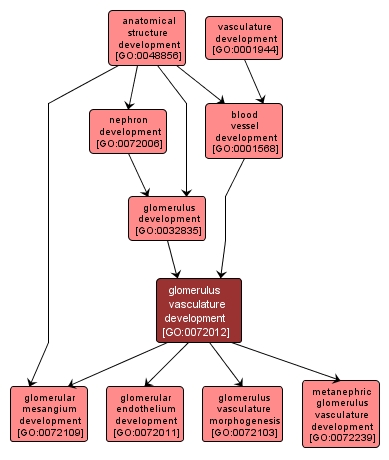| Desc: |
The biological process whose specific outcome is the progression of a glomerulus vasculature from an initial condition to its mature state. This process begins with the formation of the glomerulus vasculature and ends with the mature structure. The glomerulus vasculature is composed of the tubule structures that carry blood or lymph in the glomerulus. |














